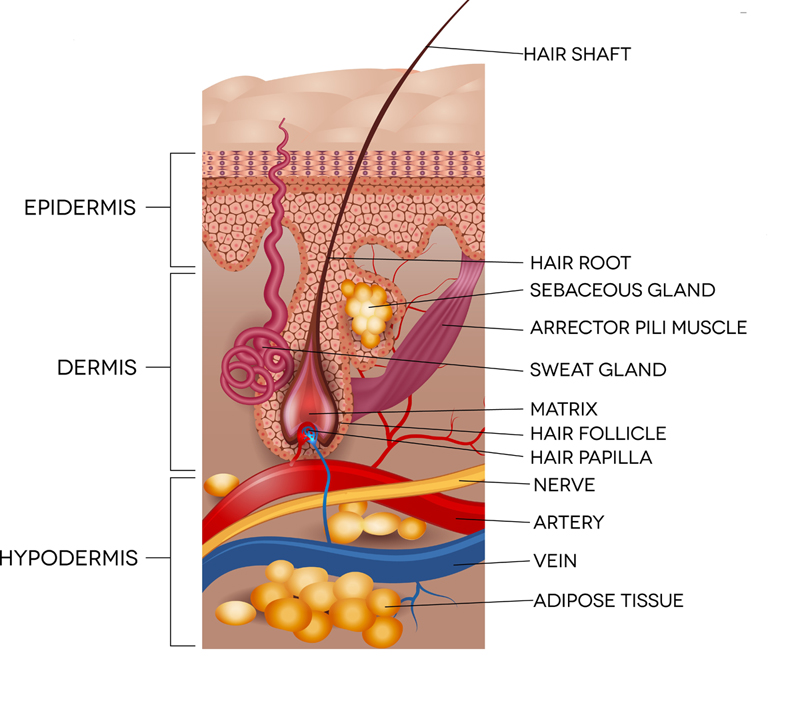Structure of Hair
-
Hair is composed of keratin, which is part of the composition of the skin and nails.
-
The hair structure divides into three distinct layers: the cuticle, the cortex, and the medulla. The cuticle is a protective outermost layer, consisting of 7-9 overlapping layers of flattened cells like fish scales. The cortex contains lots of melanin, which is responsible for hair colour and thickness. Pigment cells grow from infancy until the hair is fully mature. If pigment cells stop growing before they are fully mature, it can lead to lack of colour or grey hair. The medulla is the innermost layer, consisting of fibrous cells and air spaces.
-
Hair roots are hidden in the scalp and protected by hair follicles. Each hair follicle is attached to capillaries and absorbs nutrients from the blood.
-
Surrounding the hair follicles are secretory glands that secrete a fat called sebum, which makes the hair shiny and waterproof.
-
Hair follicles are formed during infancy and stop after birth. The number of hair follicles will not be affected by acquired conditions. In other words, hair follicles will not decrease or disappear.
-
The scalp has an average of 100,000-350,000 hair follicles. Hair follicles can grow hair fibres, but it does not mean that each hair follicle has the ability to produce hair.
-
Productive hair follicles grow hair in a specific cycle. The cycle can be divided into three phases, Anagen (Growth), Catagen (Transition), and Telogen (Rest). The hair growth cycle will be affected by age, pathology, and various physiological factors.

